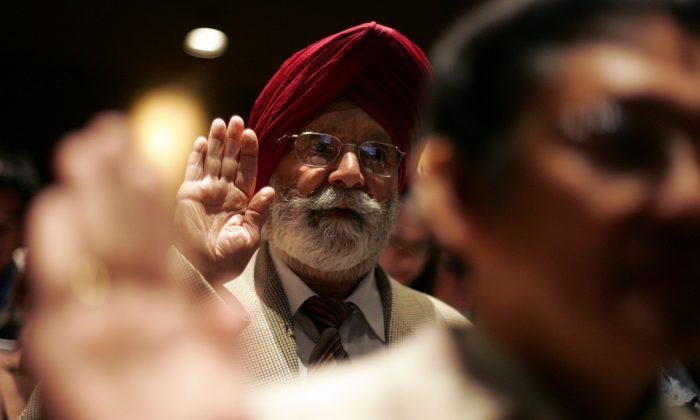Migration is the foundation stone of India-US relations, if not the bedrock itself. Modern migration of Indians into the United States of America has been happening for at least 90 years now. While the China-US economic relationship leans heavily on trade via the movement of goods, the India-US economic relationship is based more on the movement of people and services. Outside of a sizeable population of Indian origin in the US of about 2-3 million, Indian citizens also form the highest number of H-1B and L-1 visa holders, both dominated by technology and software professionals. Along with permanent migration, the employment of Indians in high-skill and innovative sectors in the United States is the most enduring element of India-US relations over the last several decades.
In 2013, the US Senate passed S.744 Immigration Reform Bill, which among other things rationalises American immigration policies, updating the requirements and caps on various US visa types. The bill is currently tabled in the US House of Representatives and is yet to receive sufficient support to pass. Broadly, this immigration reform is quite welcome for Indians as it modernises Immigration Reform and Control Act of 1986, now almost three decades old. It finally moves US immigration policy from one that is largely family-linked to one that is skill-based. However, the reform bill is punitive on big companies that are dependent on large numbers of H-1B and L-1 visa holders – both by raising the visa fees manifold and putting hard caps on visas issued to individual companies. With the addition of onerous local labour-sourcing requirements, the proposed reform will make it extremely difficult for many Indian IT companies – deploying many Indians providing services for American clients – to continue operations in the US.
There are two challenges facing Indian migration to the US today. The first is that while the rich contribution of Indian Americans to the US economy has been widely noted, this has not translated into thought on policies that make it easier for talented Indians to work in the United States. The second is that migration finds little purchase in government-to-government relations that policymakers in India and the US have been trying to boot up over the past decade.
While visa policies can be dismissed as pedestrian concerns beneath the notice of strategic thinkers, immigration is a tie binds the two nations and the two states with greater strength than anything else today. More dinnertime conversations in India revolve around US visas every month than the sum total of all discussions on India’s nuclear cooperation with the US. It is immigration that is the main reason why Indians have had a uniformly high positive attitude towards the United States, across years and presidential regimes. A sound strategic partnership has to start by strengthening this.
The two governments, and analysts on both sides have rarely looked at immigration as a matter of strategic import. From before the introduction of Senate Immigration Bill in April 2013, legislators in the United States mostly considered the US-Mexico bilateral relationship in relation to immigration. The India-US bilateral relationship has had a weak influence, if any, on the drafting of immigration policy.
A few think tanks and analysts recognise immigration as an element in revitalising the economic cooperation between India and the US. Ashley Tellis, for example, calls for rationalising the US visa regime to ease the movement of high skilled labour, as an element of sustaining the transformation in India-US relations. CSIS-Wadhwani Chair also recommends improving the ease of movement of high-skill professionals through start-up visas and other mechanisms for reigniting the India-US economic relationship. Only a few lobby groups such as the US-India Business Council have pushed back against overreaching immigration reform.
On the Indian side, remarks by external affairs minister Salman Khurshid from June 2013 are quite telling, where he refers to immigration reform in the US as a concern for Indian IT firms and something that a CEOs’ forum can resolve. By treating it purely as a matter of concern for Indian businesses, Mr Khurshid also fails to communicate the importance of immigration reform. It is only since February 2014 that the Indian Ambassador to the United States S Jaishankar has started highlighting the problems for India in the proposed immigration reform legislation in the US. The previous Ambassador Nirupama Rao had also flagged the accommodation of Indian interests back in April 2013, but to little effect.
Voices in New Delhi and Washington DC may be insufficient to bring about mutual gain. Sound immigration reforms in the US will need conversations between Bangalore and Silicon Valley, between Chennai and Chicago, and between Hyderabad and Houston to complement those between policymakers in both national capitals. Interlocutors on both sides can also consider insulating immigration concerns from other aspects of trade negotiations, given how human movement is embedded into all aspects of India-US relations.
As a new government comes into place in India later this summer, revitalising the India-US relationship will likely be high on the government’s agenda. Doing so without adequate attention to US immigration and visa policy would be an exercise in futility.
Pavan Srinath is the head of policy research at the Takshashila Institution. Republished from Pragati under Creative Commons License 3.0.
